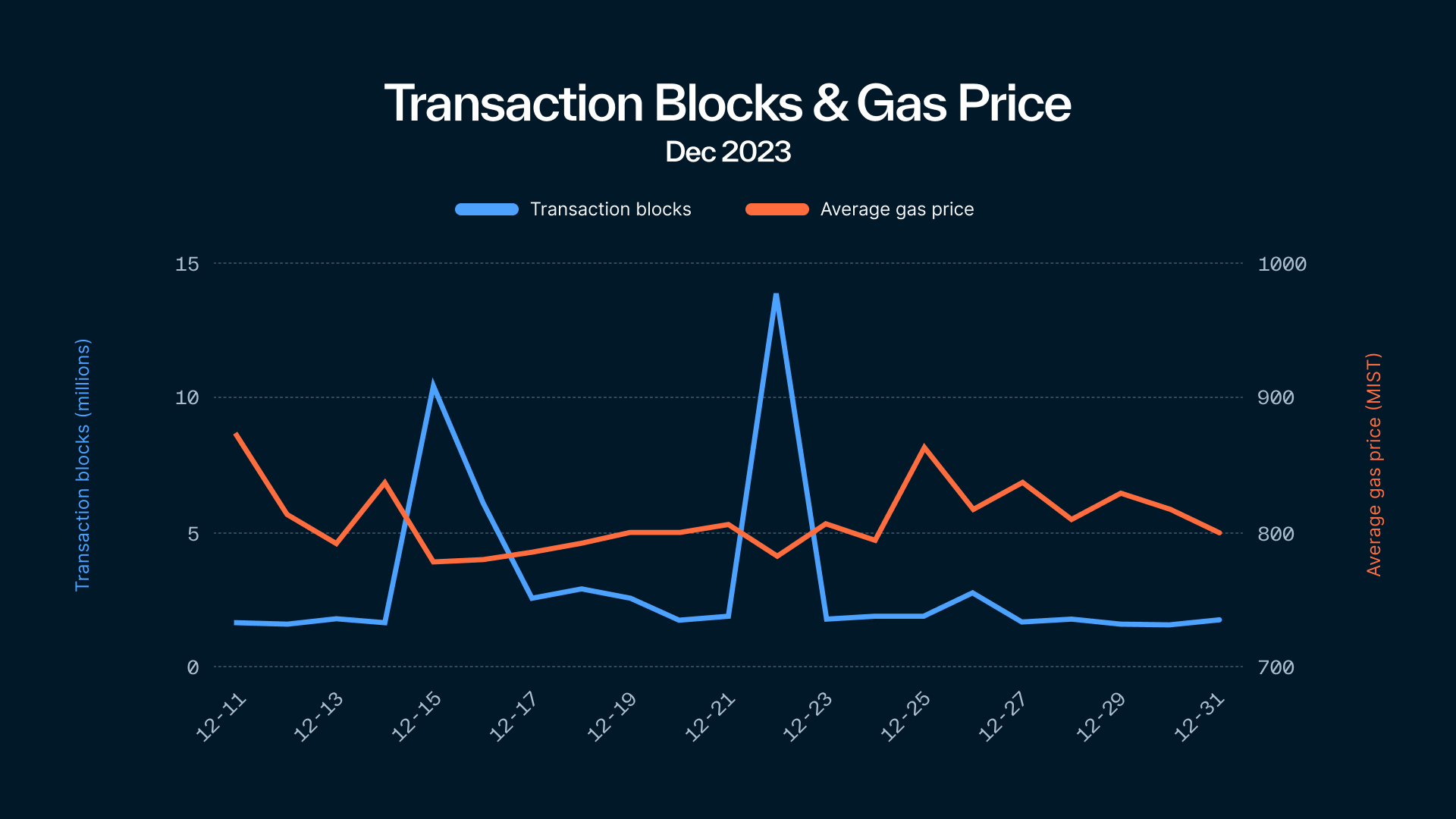Sui Closes in on 6,000 TPS as Inscriptions Surge
Sui gas prices remained stable as TPS surged towards 6,000 during wave of inscription related activity.

As 2023 drew to a close, users flooded numerous smart contract platforms with inscription-related transactions, inadvertently serving as stress tests for various networks. Amidst congestion and fee spikes on many platforms, Sui stood out by achieving impressive transactions per second (TPS) without slowdowns or a spike in gas fees.
Initially used in Bitcoin, inscriptions offer a method for recording arbitrary data onchain without the use of smart contracts. This method utilizes the witness field within Bitcoin transactions, requiring minimal fees and permanently associating the data with a distinct Bitcoin coin unit. Consequently, individuals began inscribing tokens, including NFTs, onto Bitcoin.
Inscriptions and smart contract platforms
As inscriptions took off on Bitcoin, developers adapted them to the Ethereum Virtual Machine (EVM) by storing inscription data within EVM transaction calldata fields. EVM calldata serves as an optional, read-only, and cost-effective data field for EVM transactions, primarily utilized for smart contract inputs and rollup data. By defining specific interaction formats, inscriptions enable the recording and management of arbitrary data onchain. Similar to Bitcoin, inscriptions on smart contract platforms are commonly used to inscribe token and NFT metadata onchain. For this use, inscriptions offer a cost-effective method of storing data immutably and directly onchain.
Inscriptions have also found use on smart contract platforms in creating and managing token balances and metadata. On many chains, particularly those using an implementation of the EVM, transactions involving inscriptions experience significantly lower gas fees compared to typical transactions involving smart contract interactions. However, these inscription use cases often rely on offchain indexers, which introduce various tradeoffs.
The recent wave of inscription activity has been driven by their ability to create and exchange tokens without burdensome smart contract gas fees, which can be substantial on most blockchains. Consequently, inscription usage surged across most smart contract platforms. As these transactions remain relatively inexpensive, users vying for sought-after inscriptions often resort to submitting transactions in very quick succession. However, the overwhelming influx of transactions during the recent inscription frenzy strained the infrastructure of many blockchain networks, leading to failed transactions, spikes in gas fees, and even network downtime. Essentially, the wave of inscription-related activity inadvertently acted as a grassroots stress-test.
Sui’s inscription performance
Inscriptions are implemented differently on Sui due to its object-centric data model. With objects acting as the basic storage unit of Sui, what is called an inscription on other chains is simply an object with specified data fields. The data written to object fields can be used for things such as managing tokens not recognized by the Move virtual machine, but inscriptions can be used for much more than these commonly observed use cases. Since inscriptions allow for the posting of immutable data to Sui, developers may find inscriptions as an attractive alternative to other data storage platforms, such as IPFS.
While the impetus of the inscription activity seen in December was to avoid burdensome gas fees on other chain, it is expected that inscriptions find a valuable place within the Sui developer toolset as a way to post data immutably onchain. With various methods to create inscriptions on Sui, including ways that leverage Sui’s transaction fast path, developers will explore which design makes the most sense for their use case. Presently, most inscriptions on Sui rely on shared objects and must pass through consensus, offering a unique method to gauge Sui’s throughput in production.

During a surge in inscription-driven activity, Sui encountered two days of exceptionally high transactions, surpassing 10 million transaction blocks processed each day, with a peak of over 13.8 million transaction blocks processed on December 22, 2023. In fact, despite the heightened demand, the average gas price decreased, showcasing the network's stability and the efficiency of Sui’s gas pricing mechanism. Demonstrating remarkable resilience, Sui achieved a peak TPS of nearly 6,000, underscoring its impressive network throughput capabilities.
Built for the future
Built as a cutting edge compute environment, Sui's inherent flexibility and support of developer expression lets it support any need or desire. The expectation of onchain storage and a tokenomics model designed around consistently low gas fees lets Sui easily adapt to new ideas in the world of blockchain. As more developers discover the power of Sui and Move, the possibilities are endless.



